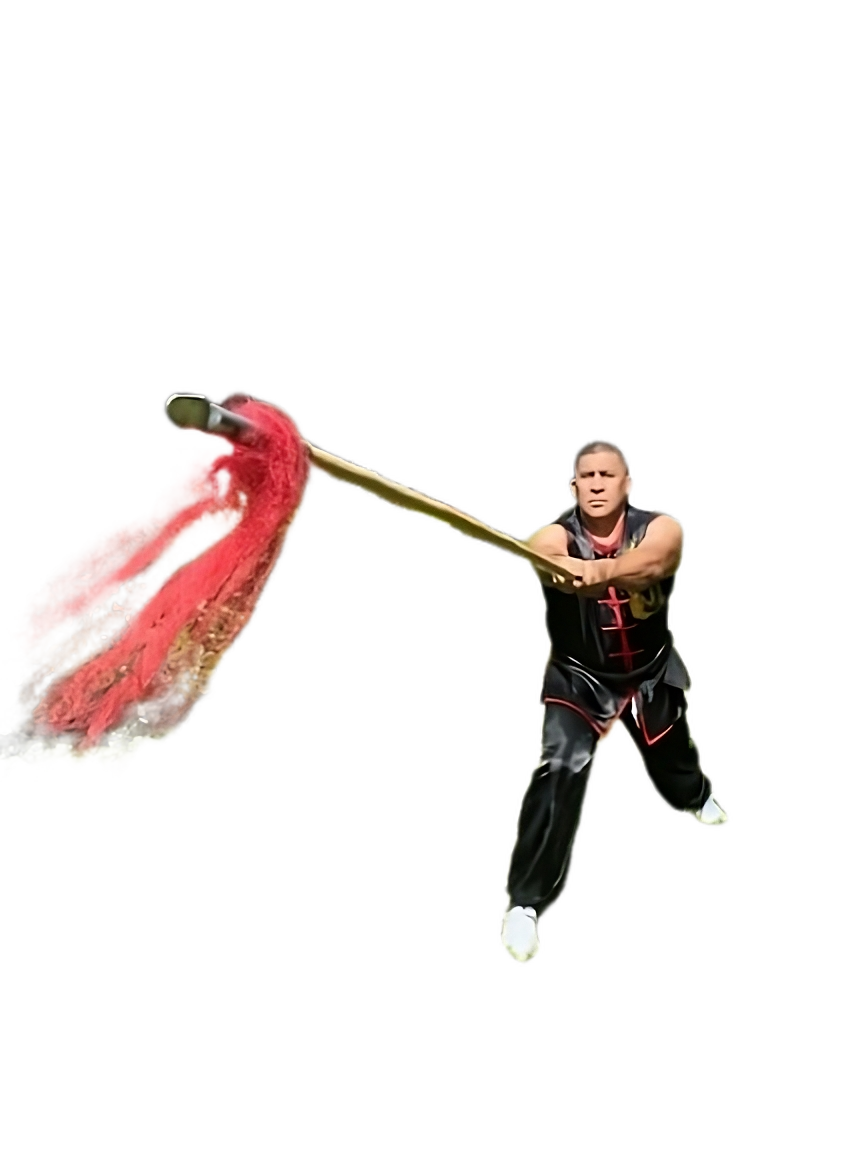Testimonials
What is Wushu
SPORT WUSHU
Wushu, which is also referred to as kung-fu, is the collective term for the martial art practices which originated and developed in China. Today wushu has developed into various forms of practice, each with its own focus and goals. Some practices highlight health and well-being as their primary goal, while others stress maintaining the traditional culture and skills from which the arts originated. More recently, wushu has developed into a global competitive sport, which is practiced and enjoyed by thousands of people worldwide due to its unique and exciting content.
Sport wushu is categorized into two main categories, namely Taolu (Routines Competition) and Sanda (Free-Fighting Competition).
Taolu refers to the set routine (form) practice component of wushu. A taolu routine comprises of a continuously connected set of pre-determined techniques choreographed according to certain principles and philosophies to incorporate stylistic principles of attack and defense. These include hand techniques, leg techniques, jumps, sweeps, stances and footwork, seizing, throwing and wrestling, and balances.
AT OFFICIAL WORLD WUSHU CHAMPIONSHIPS, THE MAIN TAOLU EVENT CATEGORIES INCLUDE:
- Chang Quan(Long Fist)
- Nanquan(Southern Fist)
- Taijiquan(Tai Chi Chuan)
- Taijijian(Tai Chi Straight Sword)
- Daoshu(Broadsword)
- Jianshu(Straight Sword)
- Gunshu(Cudgel)
- Qiangshu(Spear)
- Nandao(Southern Broadsword)
- Nangun(Southern Staff)
- Duilian(Choreographed Sparring/Duel)
- Baguazhang(Eight Trigrams Palm)
- Shuangjian(Double Straight Swords)
- Shuangdao(Double Broadswords)
- Xingyiquan(Shape & Intent Fist)
SANDA
Sanda is a modern unarmed combat sport that developed from traditional wushu techniques, and primarily makes use of punching, kicking, throwing, wrestling and defensive techniques.
Competition bouts take place on an elevated platform called a “leitai,” which is 80cm in height, 8m in width and 8m in length, and comprises of a frame covered in high density foam with a canvas cover. On the ground surrounding the platform is a protective cushion that is 30cm in height and 2 meters in width. Competing athletes wear protective gear that includes a headguard, chest protector, and gloves, as well as a mouthguard and a jockstrap.
Competition bouts comprise of 3 rounds in total, each lasting two minutes with a one-minute rest period between rounds. Apart from illegal blows and methods, sanda athletes may employ punching, kicking and throwing techniques from all styles of wushu.
- An athlete will be declared the winner if he or she wins 2 out of the 3 rounds of a
- bout, or if his or her opponent is knocked out.
TRADITIONAL WUSHU
Traditional Wushu (commonly referred to as kungfu) is the root of sport wushu and has a long and diverse history. As wushu originated in China, traditional wushu practices have developed and spread throughout the country’s geographical terrain and absorbed distinct cultural, ethnic and philosophical characteristics of the various groups in China.
Originating from the need for self-defense and survival, as well as an art of war, different styles and practices emerged featuring various methods, content, philosophies, tactics and techniques emerged over the thousands of years of wushu’s development. While at its core traditional wushu is a method of combat attack and defense, its practice has surpassed a simple means to an end and become deeply intertwined with legacies of ethical and moral principles. Traditional wushu’s practice is aimed at preserving the principles, methods and legacies of previous generations that developed and relied on these arts for survival and overall life improvement.
Wushu’s styles and practices vary widely, with some featuring mainly hand techniques, others focusing on leg techniques, and still others placing emphasis on wrestling; some focus on attack and defense while yet others strive to promote and preserve health and well-being. Traditional wushu also includes an extremely vast array of traditional weaponry handed down from the age of cold weapons along with practical methods that have been preserved by subsequent generations. With numerous clans, sects, family systems and styles, traditional wushu is diverse and colorful, with an extremely deep and complex physical culture. It is practiced by people from all walks of life, irrespective of race, gender, age, social class, or physical condition, a cultural and sporting gem for people everywhere.
The International Wushu Kung Fu Association (IWKA) continues to preserve and promote traditional wushu as the practice has steadily entered the realm of sport for all. Traditional wushu’s values align with those of promoting social cohesion, cultural and educational value, and the development of healthy lifestyles and habits.

El entrenamiento en artes marciales tradicionales chinas va más allá del desarrollo físico; forja disciplina, respeto y perseverancia.
